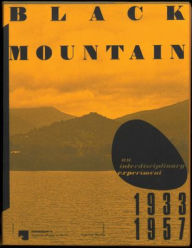Black Mountain: An Interdisciplinary Experiment 1933-1957 by Eugen Blume (Text by), Gabriele Brandstetter, Gabriele Knapstein, Brenda Danilowitz, Fabienne Eggelhofer

- Black Mountain: An Interdisciplinary Experiment 1933-1957
- Eugen Blume (Text by), Gabriele Brandstetter, Gabriele Knapstein, Brenda Danilowitz, Fabienne Eggelhofer
- Page: 464
- Format: pdf, ePub, mobi, fb2
- ISBN: 9783959052689
- Publisher: Spector Books/Nationalgalerie, Staatliche Museen zu Berlin
Download Black Mountain: An Interdisciplinary Experiment 1933-1957
Download books free in english Black Mountain: An Interdisciplinary Experiment 1933-1957 in English
Overview
From Josef Albers and John Cage to Charles Olson and Robert Rauschenberg, the teachers and students of Black Mountain shaped postwar culture Founded in North Carolina in 1933, Black Mountain College ranks alongside the Bauhaus as one of the most innovative schools of the 20th century. Inspired by the forward-thinking pedagogical ideas of philosopher John Dewey, the experimental, interdisciplinary college combined the ideas of radical European modernism with the philosophy of American pragmatism and teaching methods designed to encourage personal initiative as well as the social competence of the individual. Visual arts, economics, physics, dance, architecture and music were all taught on an equal footing, and teachers and students lived together in a democratically organized community. The second director of the school was Josef Albers, and John Cage, Merce Cunningham, Buckminster Fuller, Walter Gropius, Franz Kline and Charles Olson were among its teachers. As a result, the college played a foundational role in the development of a range of avant-garde practices, and exerted an enormous influence on the development of the arts in the second half of the 20th century. Briefly out of print and quickly becoming a sought-after book, this gloriously designed and illustrated volume was first published for the exhibition An Interdisciplinary Experiment, 1933–1957, held at the Nationalgalerie im Hamburger Bahnhof in Berlin. It remains unrivaled for its sympathetic design and fulsome documentation. A profusion of archival materials—including photographs of classes in progress and college housing with its Albers-designed furniture, and page spreads from college bulletins and issues of Robert Creeley's Black Mountain Review—is presented alongside contemporary essays. Happily back in print, Black Mountain: An Interdisciplinary Experiment 1933–1957 traces the key moments in the history of this legendary school.



0